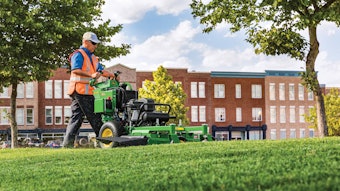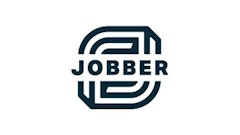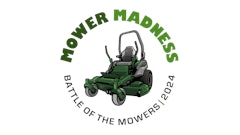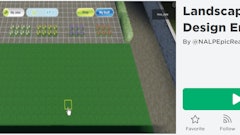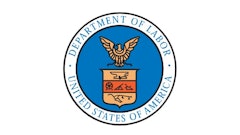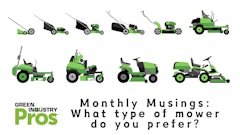
According to landscape professionals around the country, here are the industry's top trends.
Economic situation
While many experts were holding their breath in anticipation for a possible recession in 2023 and into 2024, a lot of landscape companies are breathing a sigh of relief that they’ve escaped 2023 without the huge economic downturn that was originally predicted.
"Together with environmental awareness, technological progress and supportive governmental policies, the green industry is set to propel toward unprecedented economic success," says Darren Gruner, founder and CEO of Turf's Up Radio News. "As businesses and consumers prioritize sustainability, the green industry will emerge as a leader of economic growth and innovation for years to come."
Increase in private equity
Many parts of the industry have also undergone consolidation, with private equity companies acquiring more and more smaller companies.
“A lot of landscape companies are getting involve in private equity groups, where private equity is coming in and gobbling up a lot of these medium-sized companies. I think that’s a trend that will continue for a couple of years,” says Joshua Malik, president of Joshua Tree Experts, which has locations in Pennsylvania and New York.
Malik adds that while he thinks the industry will continue to grow and be healthy, there are some small companies that aren’t going to be able to survive.
“When COVID happened, there was so much work that a lot of companies have popped up, but equipment sales are down,” Malik says. “The very experienced companies that went through these types of trends and downfalls are able to pivot because they know how to spend their money differently, how to market differently to get clients. I do think a lot of companies are going to lose their advantage against these more mature companies that have been around a long time.”
Thomas Armstrong, vice president of franchise operations for Joshua Tree Experts, says that running day-to-day operations will become difficult for those smaller companies as they struggle to meet payments on their brand-new equipment.
“During COVID, you didn’t have to market—all you had to do was show up,” Armstrong says. “Because they don’t have anything budgeted for marketing, it's going to be very difficult for them because private equity is coming in, and they’re coming in hard. They’re already here, and they’re making some big waves.”
 Joshua Tree Experts
Joshua Tree Experts
New technology
In order to become more efficient and streamline operations, and even become more sustainable, many companies are looking to new technology.
Malik says that new technology such as customer relations management software and GPS technology have been game-changers as far as efficiency goes.
“We utilize technology to its fullest,” Malik says. “It’s pretty great how technology can communicate with each other. It’s just made us so efficient in so many different areas.”
As technology continues to evolve within the industry, Eric Gilbey, product marketing manager for Vectorworks, anticipates a major shift toward data-driven decision-making, particularly with landscape architects and other designers relying more heavily on data to inform their work.
“This will include incorporating maintenance plans into the entire project planning process, as well as approving water budgets and leveraging technologies like thermal infrared and drone technology,” Gilbey says.
Autonomous equipment
Autonomous equipment is another landscapers will start to embrace new technologies.
“We need more creative engineering to reduce manual labor and increase autonomation,” says Peter Lucadano, co-owner and CEO of RedTree Landscape Systems, headquartered in Holiday, Fla.
Autonomous mowers aren’t the only item on some landscapers’ wish list, however.
“For example, there’s laser technology for weed control in the agriculture industry," Lucadano says. "I think there’s a real opportunity for that to fade into the green industry—it’s environmentally friendly, it reduces labor and weeds are a huge issue, especially in Florida.”
Efficiency-enhancing equipment
Other equipment that encourages bumps in productivity have also become popular among landscape pros.
“A bright spot that we see from a product perspective is stand-on mowers. That segment is performing well for us as more and more contractors are realizing the productivity and ease-of-use benefits of adding stand-on mowers to their fleets,” Wam says.
Brant Kukuk, compact equipment manager for Ditch Witch, agrees.
“A reliance on compact utility equipment that is strong and versatile, like a skid-steer with attachments, will be especially important for rounding out the needs of a slim team,” Kukuk says. “In today’s landscape industry, the need to do more with fewer workers has become increasingly apparent, making the versatility of equipment crucial for jobsite success. The ability to interchange skid-steer attachments offers leaner crews the benefit of multiple machines in one.”
Artificial intelligence
Artificial intelligence (AI) will also impact the industry.
Not only can AI tools help landscape pros generate mass emails, review resumes and communicate with customers, they can also be utilized in the design industry.
“As Vectorworks is actively researching how to implement delivering AI rendering and image generation features at the point of use, AI-powered tools will enable designers to create more accurate and efficient designs while also enhancing the overall user experience,” Gilbey says. “With these and other changes on the horizon, it’s clear that the design and planning industry is poised for rapid transformation in the years to come.”
Sustainability
Another noteworthy trend is the increased focus on sustainability, embodied in practices such as carbon sequestration, neutrality and geographic information systems.
“In particular, designers will be more conscious of where their supplies and products are coming from, and suppliers will need to make data and numbers more available upfront to accommodate this,” Gilbey says .
One large component of that sustainability trend centers around electrification.
"The use of battery-powered equipment represents a fundamental shift toward embracing environmentally friendly solutions," Gruner says. "With advancements in battery technology, companies are now able to power a wide range of equipment without having to rely on traditional fuel. This not only reduces harmful emissions but also contributes to a more sustainable and eco-conscious approach to operations. Embracing the use of battery-powered equipment can also be a way for companies to get an edge on their competitors."
Other manufacturers see the trend slowing, or not taking off as quickly as expected.
“While we believe that electrification is the future for outdoor power equipment, we did see a slowdown in the adoption rate of electrification that we didn’t forecast,” says Christin Wam, senior director of marketing, Ferris Mowers, Briggs & Stratton. “While every manufacturer was trying to race to the finish line to have electric solutions available, the demand we expected to see just wasn’t there.”
Wam says Briggs & Stratton will continue to monitor adoption rates of electrification, along with tracking government and HOA behavior when it comes to emissions and sound.
Ray Gallant, Ph.D., vice president, sustainability and productivity services, Volvo Construction Equipment North America, says various factors need to be taken into consideration as the industry transitions more toward green technologies.
“The concern I most often hear from customers is around refueling or recharging infrastructure. This is especially true in applications where the run time needed exceeds what is possible with the current technology and necessitates opportunity charging,” Gallant says.
Holding on to equipment longer
As prices increase, some companies may be holding on to their equipment longer, prompting the need for better service and more consistent maintenance intervals.
“One area that we see as an opportunity in 2024 is helping our dealer partners optimize their service and parts business,” Wam says. “If their customers are going to be holding on to equipment longer, they’re going to want to service that equipment and keep it running. We’ll be working with our dealers to make sure that they’ve got the right parts on hand and the right advertising in place to remind customers to service their units at regular recommended intervals.”
Emphasis on outdoor living spaces
The craze of outdoor living has continued beyond the pandemic.
“2022 was the year of the pool. The demand for pools has cooled a bit, but it’s still there, and overall, there is still trends toward outdoor living space,” says Keith Bowman, president of horticultural service and business development for McHale Landscape Design headquartered in Upper Marlboro, Md. “Clients want to extend their homes to the outdoors. We’ve received more requests for kitchen gardens lately. Some are quite elaborate and include structures: greenhouses, she-sheds, and we’ve even constructed a hen house.”
For more on the current state of the industry, check out these articles below:
- Find a review of 2023 here.
- Check out what regulations are coming down the road here.
- See what landscape pros' top advice is here.
- Discover what experts' individual takes are in the following Q+As:
- Ditch Witch
- Volvo Construction Equipment
- RedTree Landscape Systems
- Briggs & Stratton
- E&M Landscape Services
- McHale Landscape Design
- Vectorworks
- See additional commentary on the State of the Industry here.




